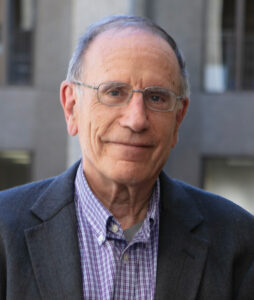From the Dean

When OpenAI’s ChatGPT-4 passed a bar exam earlier this year, I think most attorneys took notice. I am a criminal law specialist, which wouldn’t necessarily prepare me to weigh in on artificial intelligence. But as you’ll read in this issue’s feature, we all need to get comfortable with this new technology, which will touch many aspects of our lives—and the legal profession. The debate about whether it will be positive or negative is well underway, but the technology is here—and we need to learn about it.
Staying on the positive, how might AI be used for the good? This issue’s feature “AI and the Law” highlights several examples, including work being done by David Freeman Engstrom, Margaret Hagan, the Rhode Center, and the Legal Design Lab focused on access to justice. They’ve partnered with courts in seven states to make it easier for tech providers to serve litigants using AI-based tools. Meanwhile, Dan Ho and students in his RegLab are documenting the many challenges that the federal government faced in implementing AI legal requirements so that government agencies can actually utilize new tools. Julian Nyarko is tackling biases with an algorithm he developed to mask race-related information from felony reports. And challenging legal questions about liability and artists’ rights are being studied by Mark Lemley and Paul Goldstein.
While there is much talk about AI taking over—a 2001 Space Odyssey scenario—I take some comfort in knowing that so many of my colleagues here at Stanford Law School are researching it, thinking about it, using it, and sharing their expertise with policymakers, judges, and government administrators. And the article touches on just some of our faculty members’ work in this area.
Many of our alumni are at the forefront of AI too. Jake Heller and Pablo Arredondo, co-founders of the legal tech company Casetext, certainly are. Their company uses large language models and AI to offer a tool that can read, for example, contracts and other documents at superhuman speeds with great accuracy—searching for key words and phrases, identifying patterns and disparities. In other words, it’s a tool that can do in hours what a junior associate at a law firm or overworked nonprofit attorneys might take days to finish. This has the potential to free up our time to do more. We are at the beginning of what I expect to be a turning point.
And there is so much more in this issue. As a member of the faculty since 1981 and a Stanford Law graduate, I have been reading the Stanford Lawyer magazine for a long time—longer than most of you—though not longer than members of the Class of 1956, who are discussed in an enjoyable piece. That we move nimbly from AI and profiles of fascinating alumni including California Solicitor General Michael Mongan and Lucasfilm attorney Jessica Verran-Lingard to an evocative review of Buzz Thompson’s new book, Liquid Asset: How Business and Government Can Partner to Solve the Freshwater Crisis, and more is evidence that we, as lawyers, can hold different issues in the air at the same time. We learn and we juggle. As interim dean, I am certainly honing my juggling skills—trying my best not to let anything drop. But I am especially enjoying spending more time with students, staff, faculty, and alumni—communing with the people who have always made this a special place to study and work. I hope you enjoy this issue as much as I did. SL
